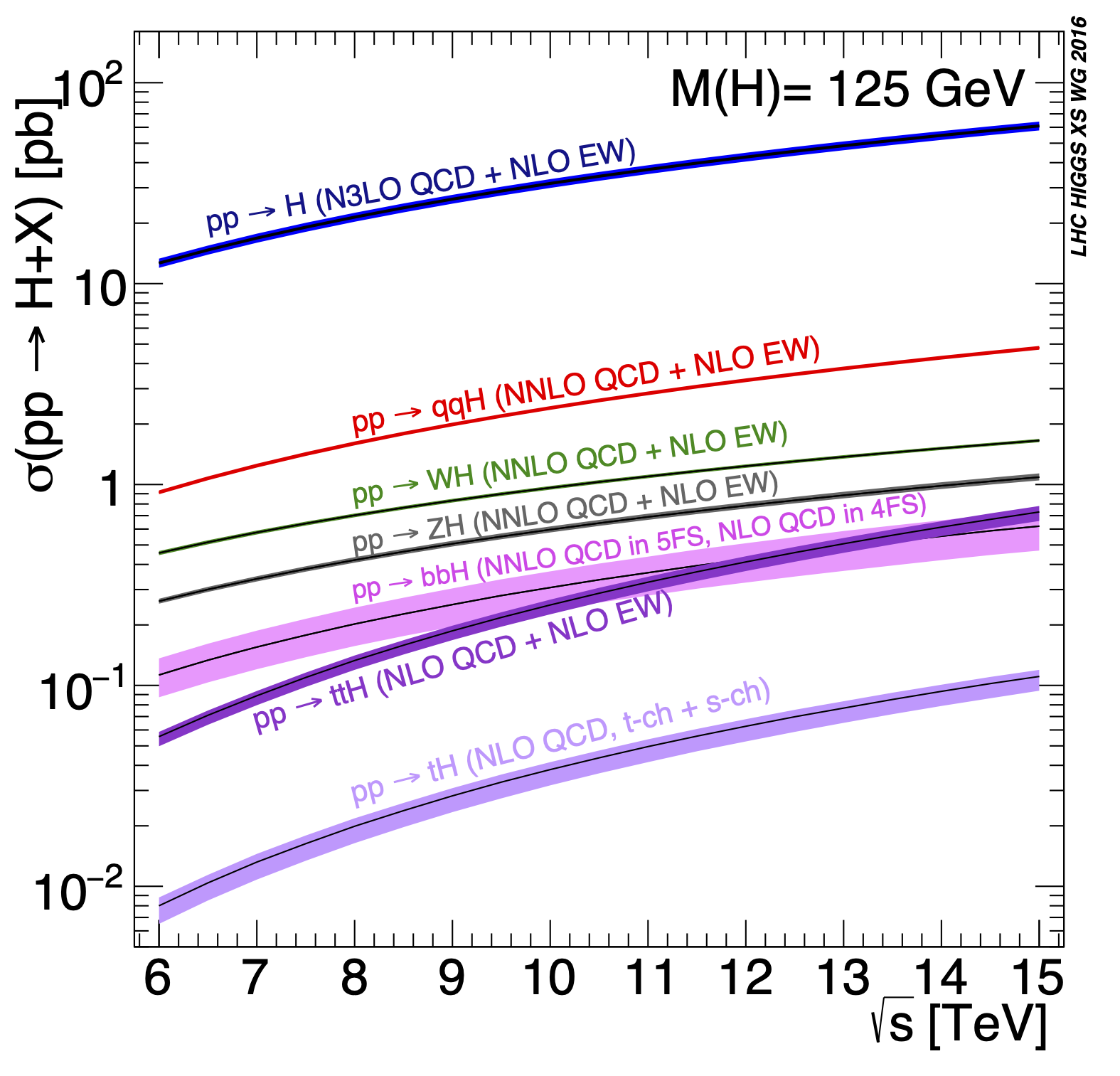PageContent
QFT@Colliders
Quantum Field Theory for Collider Physics
Local coordinator: + Gian Paolo Vacca
Phenomenology of fundamental interactions
Our current understanding of the fundamental interactions at high energies is encapsulated in the Standard Model, which includes strong and electroweak interactions, both in the perturbative and non-perturbative (e.g., hadronic and nuclear physics) regimes. A wide set of experiments based on the acceleration of beams of particles or nuclei to high energy or at high intensity, such as those running at the CERN, Fermilab, Brookhaven laboratories and based on observations on earth or in space, have largely confirmed the predictions of the Standard Model. Nevertheless many questions remain unanswered. Among these, the dynamics of strong interactions at high density is the subject of many investigations. Another leading topic is the search for new physics in the sectors of the Standard Model that are still not very much explored, i.e. the Higgs potential and its couplings to first and second fermion generation, the neutrino masses and mixings, or measured. In parallel, many open questions, such as the nature of Dark Matter or the origin of the matter/anti-matter asymmetry are considered. In general, we are interested in all measurements and searches that can shed light on the existence of new physics beyond the electroweak scale with all the implications that these can have on the origin, history and evolution of the Universe and help to build a consistent fundamental model of all matter and interactions.
Research activities
- Scattering amplitudes
We develop cutting-edge methods for the study and calculation of loop integrals and scattering amplitudes in quantum field theory. These rely on advanced mathematical and computational techniques such as modern methods for linear reduction, differential equations, the study of special functions, finite fields and functional reconstruction techniques. We combine these with approaches that exploit important physical and mathematical properties of amplitudes and loop integrals, such as unitarity, integrand reduction and physical projectors. These methods can be applied to the study of a broad range of physical problems, that include interactions of the Standard Model, its extensions, gravity and classical observables. We especially focus on multi-loop predictions characterized by high complexity, with both formal and phenomenological applications
Tensor decomposition for bosonic and fermionic scattering amplitudes, T. Peraro and L. Tancredi, e-print: 2012.00820 [hep-ph], Published in: Phys. Rev. D 103 (2021) no.5, 054042
Classical Yang-Mills observables from amplitudes, L. de la Cruz, B. Maybee, D. O’Connell and A. Ross, e-print: 2009.03842 [hep-th], Published in: JHEP 12 (2020), 076
FiniteFlow: multivariate functional reconstruction using finite fields and dataflow graphs, T. Peraro, e-print: 1905.08019 [hep-ph], Published in: JHEP 07 (2019) 031
First look at two-loop five-gluon scattering in QCD, S. Badger, C. Brønnum-Hansen, H. B. Hartanto and T. Peraro, e-print: 1712.02229 [hep-ph], Published in: Phys. Rev. Lett. 120 (2018) 092001
Scattering amplitudes over finite fields and multivariate functional reconstruction, T. Peraro, e-print: 1608.01902 [hep-ph], Published in: JHEP 12 (2016) 030
- Scattering in the Regge limit
The Regge regime is of special interest in hadronic processes as it gives the opportunity of exploring properties of QCD in extreme situations, such as those characterized by high partonic densities. Studies of hard and semi-hard processes have allowed to organise the contributions through BKFL-type of resummations. In this context our interest is towards the characterisation of the effective field theories that follow.
A functional RG approach to the BFKL pomeron, J. Bartels, C, Contreras, G.P. Vacca, e-Print: 1808.07517 [hep-th] Published in: JHEP 001 (2019) 004
- Precision physics at colliders

The final goal of precision physics is to detect possible deviations from the predictions of the Standard Model (SM) of elementary particles, which would be an indirect sign of physics beyond the SM. In this context, our interest focuses on precise predictions for physical observables in hard-scattering processes at present and future colliders. Indeed only via accurate and reliable theoretical predictions it is possible to correctly identify possible tiny discrepancies with experimental measurements. In order to improve the state-of-the-art of precision physics, we work on the calculation of radiative corrections for high-energy processes, with a particular attention to the so-called electroweak (EW) corrections and their combination with higher-order QCD effects. Our research activity comprises several aspects of this subject. We work on the automation of the calculation of radiative corrections for SM and beyond-the-SM processes in hadronic and leptonic collisions. Furthermore, we implement them in modern event Monte Carlo generators, in particular the MadGraph5_aMC@NLO framework, in order to correctly simulate extremely complex experimental set-ups. We exploit these advanced-calculation tools and techniques for studying the phenomenology of the Standard Model and of possible new-physics scenarios. A particular attention is devoted to the physics of the Higgs boson, the top quark, the weak bosons, and the interplay among them.
One-loop electroweak Sudakov logarithms: a revisitation and automation, D. Pagani and M. Zaro, e-print: arXiv:2110.03714 [hep-ph]
Virtual QCD corrections to gluon-initiated diphoton plus jet production at hadron colliders, S. Badger, C. Brønnum-Hansen, D. Chicherin, T. Gehrmann, H. B. Hartanto, J. Henn, M. Marcoli, R. Moodie, T. Peraro, S. Zoia, e-print: 2106.08664 [hep-ph]
RIP Hbb: how other Higgs production modes conspire to kill a rare signal at the LHC, D. Pagani, H.S. Shao, M. Zaro, e-print: 2005.10277 [hep-ph], Published in: JHEP 11 (2020) 036
The automation of next-to-leading order electroweak calculations, R. Frederix, S. Frixione, V. Hirschi, D. Pagani, H.S. Shao, M. Zaro, e-print: 1804.10017 [hep-ph], Published in: JHEP 07 (2018) 185, [1804.10017]
Large NLO corrections in ttW and tttt hadroproduction from supposedly subleading EW contributions. R. Frederix, D. Pagani, M. Zaro, ; e-print: 1711.02116 [hep-ph], Published in: JHEP 02 (2018) 031
Probing the Higgs self coupling via single Higgs production at the LHC, G. Degrassi, P. Giardino, F. Maltoni, D. Pagani, e-print: 1607.04251 [hep-ph], Published in: JHEP 12 (2016) 080
- Effective field theories
The existence of the physics beyond the Standard Model can be investigated either with a top-down model-building-inspired approach focused on the search of new resonances, or with a bottom-up method that looks for new interactions among the known particles. In the second case, the effective field theory method provides a consistent and systematic framework to the interpretation of the experimental results. In this context, we work on providing accurate predictions for collider observables in the SMEFT framework relevant for Higgs, EW, and top quark phenomenology, and then extracting constraints on new physics properties by performing global fits to precision data. Following a top-down approach, we study the low-energy consequences of specific BSM scenarios and we also consider EFT at the TeV scales which can be characterised by specific symmetries connected to UV complete theories or by the presence of critical QFT in the theory space (RG fixed-points or CFTs).
Combined SMEFT interpretation of Higgs, diboson, and top quark data from the LHC, J. J. Ethier, G. Magni, F. Maltoni, L. Mantani, E. R. Nocera et al., e-Print: 2105.00006 [hep-ph]
Top-philic heavy resonances in four-top final states and their EFT interpretation, L. Darmé, B. Fuks, F. Maltoni, e-Print: 2104.09512 [hep-ph]
Automated one-loop computations in the standard model effective field theory, C. Degrande, G. Durieux, F. Maltoni, K. Mimasu, E. Vryonidou et al., e-print: 2008.11743 [hep-ph] , Published in: Phys.Rev.D 103 (2021) 9, 096024
Critical models with 4 scalars in d=4−ϵ,A. Codello, M. Safari, G.P. Vacca, O. Zanusso, e-print: 2008.04077 [hep-th], Published in: Phys. Rev. D102(2020) no. 6, 065017
Functional perturbative RG and CFT data in the ϵ-expansion, A. Codello, M. Safari, G.P. Vacca, O. Zanusso, e-print:1706.06887 [hepth], Published in: Eur. Phys. J. C78 (2018) no.1 30,
Non-Abelian Higgs models: paving the way for asymptotic freedom, H. Gies, L. Zambelli, e-print: 1611.09147 [hep-ph], Published in: Phys. Rev D96 (2017) 2, 025003.
- Future Colliders
The LHC, which represents the energy frontier in collider experiments, is planned to run in the next decade(s) and collect up to 3 ab inverse of integrated luminosity. Currently, plans for future accelerators are being actively discussed in the HEP community, ranging from linear and circular e+e- Higgs factories, to pp colliders at very high energy, ~100 TeV, to multi-TeV mu+mu- circular colliders. We are actively contributing to studies to asses the physics potential of such future machines, both for precision measurements as well as direct discoveries, with a particular interest in the reach of muon colliders.
e-Print: 1905.03764 [hep-ph], Published in: JHEP 01 (2020), 139
Vector boson fusion at multi-TeV muon colliders, A. Costantini, F. De Lillo, F. Maltoni, L. Mantani, O. Mattelaer et al.
e-Print: 2005.10289 [hep-ph], Published in: JHEP 09 (2020), 080
Measuring the quartic Higgs self-coupling at a multi-TeV muon collider, M. Chiesa, F. Maltoni, L. Mantani, B. Mele, F. Piccinini et al. , e-Print: 2003.13628 [hep-ph], Published in: JHEP 09 (2020), 098
Group Members
Staff
Postdoc
Ph.D. students












